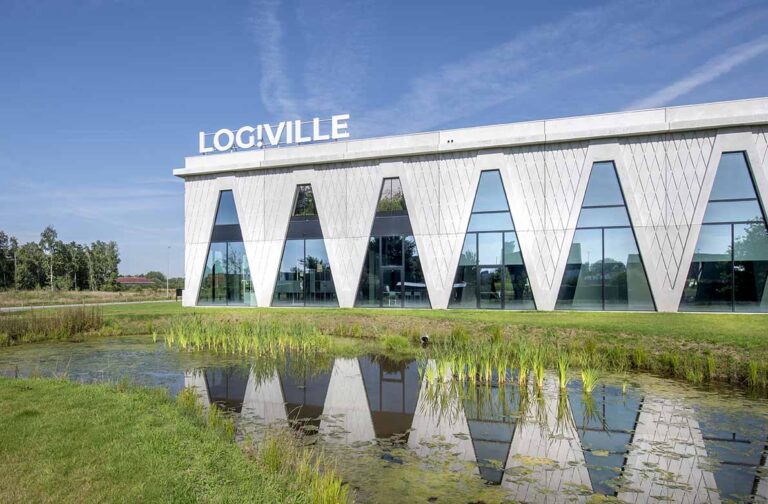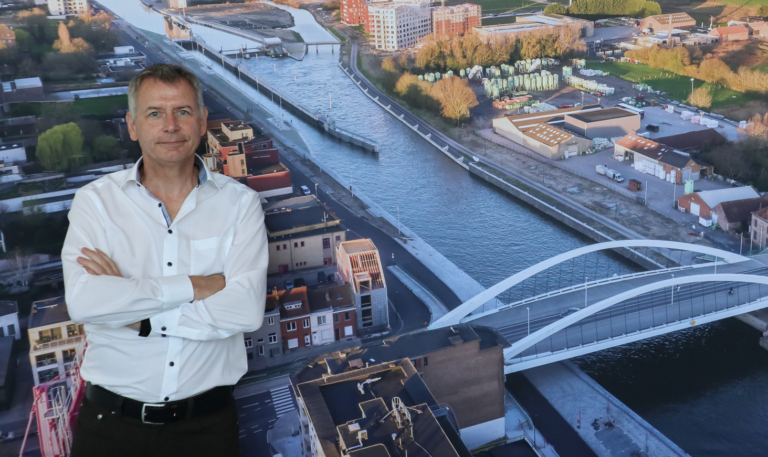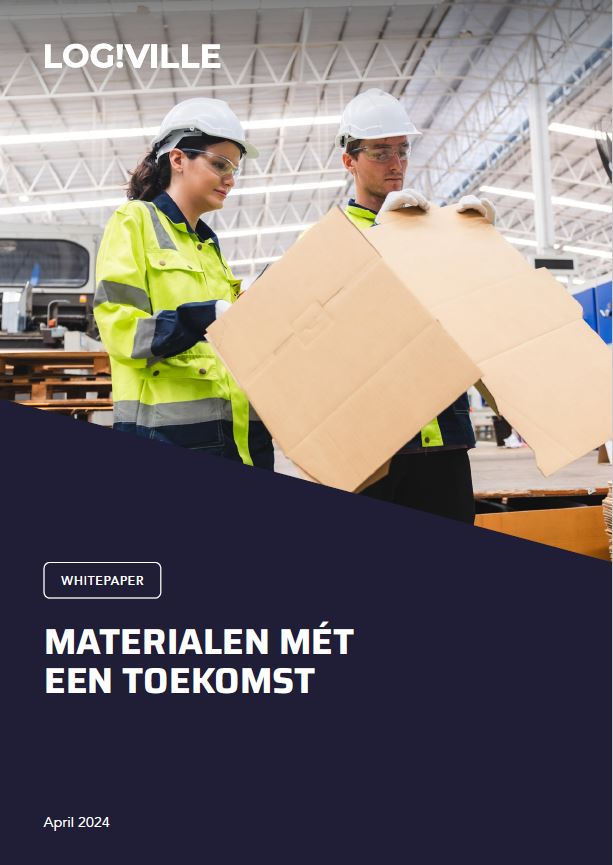Evert Bulcke (Rombit): ‘Digital coaching reduces the risk of forklift accidents by 80%’

Scale-up Rombit has been a partner of Log!Ville since the beginning, presenting its real-time safety solutions for the port and logistics sector. This sector is struggling with safety, partly as a result of the high number of accidents involving forklift trucks. CEO Evert Bulcke explains how Rombit, with its ‘digital coaching’, not only helps to prevent collisions but also to reduce operational costs.
How did Rombit come to exist?
Rombit was founded eleven years ago by Jorik Rombouts as a ‘development service’ company of Internet of Things solutions for ports and cities. Fairly quickly, we established that this working environment came with huge safety risks that were not being dealt with effectively. Various safety solutions have been around for a while, but are not very effective in real-time, and the Internet of Things provides opportunities to bring forth change in this context. In 2018, we switched to a product strategy and began developing systems to protect lone workers, forklift drivers and other logistics workers more effectively. After a capital injection of 20 million euros, we started producing safety systems that can be scaled across the world.
What do you mean by ‘scaled across the world’?
Logistics environments are extremely diverse but the safety problems are the same in 80% of the markets worldwide. Our products must, therefore, come as ‘plug & play’ solutions that are easy to implement in all countries, regardless of the business size. Rombit products are now sold all over Europe. We have two sales offices in North America, a small branch in Dubai which covers the Middle East, and we work with structural partners in South America. We do not yet have a presence in Asia, as this market does not yet have the required focus on safety. In this overall context, it is interesting to note just how similar Europe and the US/Canada are when it comes to risks and insurance.
During the COVID crisis, Rombit made news across the world with smart badges that enabled employees to respect social distancing rules. This solution was not, in fact, your core product.
That’s right. The social distancing wearables were developed at high-speed on the basis of Rombit’s existing products. They were a massive success and gave us an opportunity to gain an international foothold and learn from our customers in industry and logistics. Today, our products focus on accident prevention, including the area of intra-logistics. The safety situation is not ideal in logistics settings, partly as a result of accidents involving forklifts and other vehicles; annually, around three people in Belgium die in forklift accidents. The figures have not dropped in years while the numbers of workers, including many more temporary employees, are constantly increasing which, in turn, increases the risks.
Rombit concentrates on preventing accidents by fitting forklifts with our Driverbox. Sensors in this box measure the speed, acceleration, deceleration, cornering and much more. The modules, which work autonomously, then notify the forklift truck driver of their driving behaviour in real-time. They also send the data to a platform where it can be analysed further. This data allows driving behaviour to be monitored and drivers to be coached if necessary. The use of our digital coach reduces the risk of accidents considerably (by up to 80%) and permanently adjusts driving behaviour.
The result of this integrated approach is a three-fold return on safety: a reduction in the number of effective accidents, a reduction in costs (lower repair costs and wear and tear) and lower insurance costs.
Are insurance companies involved too?
They are getting involved more frequently and not just in Belgium but also abroad. Sometimes they even take the initiative themselves; we were approached by the insurance firm for a company (I won’t name names) where collisions and damage were common. There also was an above-average rate of accidents with physical injury. With this in mind, we fitted the Driverbox, implemented digital driver coaching and achieved positive results in a short period.
Our approach stands out from the classic telematic systems by the real-time prevention system. The driver receives an immediate alarm when he/she engages in dangerous driving and is also notified about hazardous situations, such as when a pedestrian comes too close. This process works based on smart badges or wristbands that notify the wearer, and driver. Although accidents with pedestrians may have reduced, they are more often fatal, so collision prevention must be two-fold, with coaching structurally reducing the risks and smart badges preventing accidents in real time.
You also mentioned a reduction in operational costs. Can you explain?
The data that is registered by the Driverbox is not only used for coaching but also provides insights into the use of the forklift trucks, e.g. how often they are used and how long they are parked up. This helps to manage the fleet better and, if the vehicles are driven more safely, the forklift trucks are more economical to use, cutting down on energy consumption. Analysis of the data has also shown that driving slowly is just as productive as driving quickly and reduces wear and tear on tyres, bearings and so on, so fewer unplanned services are required. The need for repairs is also reduced (any damage is expensive) and the vehicles are left parked up less frequently. These secondary effects were the deciding factor when several of our customers opted for the Digital Driving Coach.
The link between an improvement in safety and a reduction in costs is explained in a film, that you can watch here.
In logistics buildings, robotised forklift trucks and Autonomous Mobile Robots (AMRs) are being used more frequently. Can the Driverbox be used in a setting where automated devices and humans work side by side?
This market does exist but is still in its infancy. Robotised forklift trucks are currently mainly used in contract logistics, where activities are more frequent and cover more regular routes. With more complex logistic activities, humans are still a vital element but this market will almost certainly develop further until it becomes more common for man and machine to work in the same spaces. When both types of forklift trucks are used in the same setting, there are specific safety risks but this is not a problem for our products, as automated trucks can also be fitted with a real-time collision prevention module. Manual and automated forklift trucks can communicate with one another and collisions can be prevented via UWB (Ultra-Wide Band). AMRs can also stop automatically if a pedestrian, who is fitted with a smart badge, moves too close and pedestrians can be warned when an AMR is approaching.
Furthermore, it is possible to implement geofencing, where a pedestrian is notified when he/she enters a zone where robots are working.

In May and June, Log!Ville is organising thematic tours on safety in logistics. That must be music to the ears of Rombit?
Absolutely! Not just because we can inform logistics companies about our products directly, and encourage them to improve safety on the work floor, but also because we can use them as a reference group. The groups of visitors will be smaller than the regular visits and this allows us to exchange ideas more thoroughly and cover subjects in more depth.



